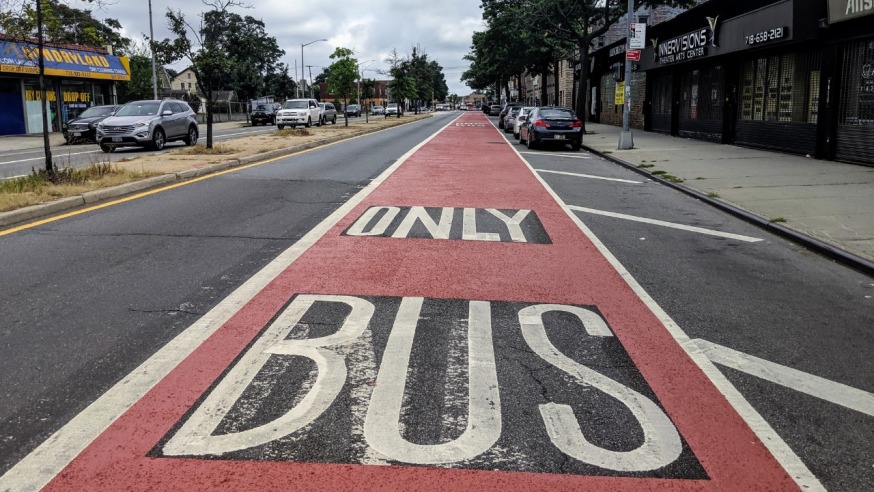
A bus lane on Merrick Boulevard (DOT)
Oct. 3, 2022 By Christian Murray
The MTA is installing additional cameras on its bus fleet to ticket drivers who encroach on its bus lanes.
The agency said that it will be adding cameras to 300 buses by the end of the year across nine routes in Staten Island, the Bronx, Queens and Brooklyn—on top of the 123 buses that are equipped with the hi-tech system today.
The system—called ABLE (as in automated bus lane enforcement)—involves the mounting of cameras on MTA buses, which snap photos of vehicles in the lanes while the bus is in motion. The technology is in addition to the enforcement cameras that are permanently located in fixed positions on corridors throughout the city such as on Main Street, Merrick Boulevard and Woodhaven Boulevard, which have been installed by the Department of Transportation.
The first of the 300 additional buses with the ABLE technology was rolled out today on the Q44 Select Bus Service route, which goes through central Queens.
This year’s installment of the bus-mounted cameras will expand bus enforcement technology—through ABLE and the DOT’s fixed camera locations—to all boroughs and cover approximately 50 percent of bus lane miles across the city.
The MTA and DOT plan to expand camera enforcement to cover up to 85 percent of existing bus lanes by the end of 2023.
To reach that goal, the MTA plans to add 600 new cameras by the end of 2023. The DOT’s fixed cameras will work in concert with these bus cameras.
“Improving the bus network must be at the top of the MTA agenda,” said MTA Chair and CEO Janno Lieber in a statement. “We have made tremendous progress over the last few years with new strategies designed to speed up our buses, and now we are doubling down by using technology to clear out bus lanes so MTA buses can keep moving.”
The other routes that will see the ABLE system installed this year include the S79 SBS, Bx12 SBS, Bx41 SBS, Bx19, Q43, B62, B25, and B42.
Each bus lane corridor will have signage indicating the hours that the bus lanes are operable, and warning motorists that the lanes are camera-enforced, as the existing bus lane corridors have.
Drivers who violate these rules during enforcement periods are subject to a summons, with fines beginning at $50 and escalating, for repeat offenders, up to $250.
